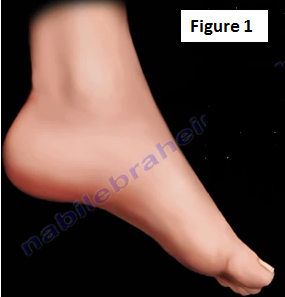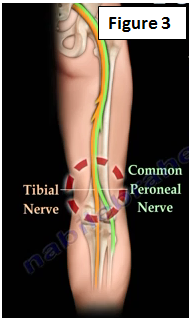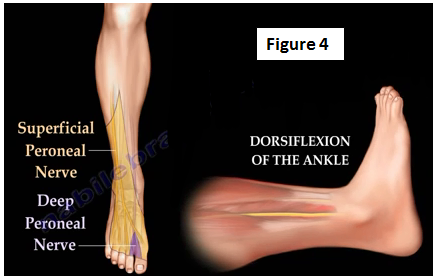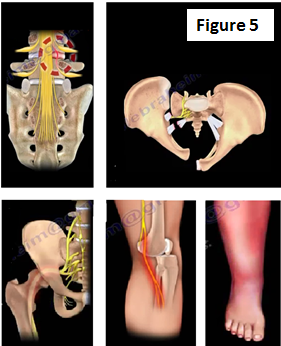What is foot drop?
Foot drop is the inability to raise the front part of the foot due to weakness or paralysis of the tibialis anterior muscle that lifts the foot (Figure 1). A common symptom of foot drop is a high steppage gait, often characterized by raising the thigh up in an exaggerated fashion while walking. When a person with foot drop walks, the foot slaps down onto the floor.
Foot drop usually results from an injury to the peroneal nerve which is susceptible to injury at any point of its course. The peroneal nerve begins from the L4, L5, S1 and S2 nerve roots and joins the tibial nerve to form the sciatic nerve (Figure 2). The sciatic nerve starts in the lower back and runs through the buttock and lower limb.
In the lower thigh, just above the back of the knee, the sciatic nerve divides into two nerves, the tibial and peroneal nerves, which innervate different parts of the lower leg (Figure 3). The common peroneal nerve then travels anterior around the fibular neck, dividing into superficial and deep peroneal nerves. The deep peroneal nerve gives innervation to the tibialis anterior muscle of the lower leg, which is responsible for dorsiflexion of the ankle (Figure 4).
Conditions Causing Foot Drop (Figure 5):
A herniated disc compressing the L5 nerve root may cause foot drop. Another cause of foot drop can be a lumbosacral plexus injury, pelvic fracture. Foot drop may also be caused by a sciatic nerve injury, like a hip dislocation. The common peroneal division of the sciatic nerve is commonly injured during fracture dislocation injuries involving the hip. An injury to the knee, such as a knee dislocation may also cause foot drop. In the event of a knee dislocation, it is important to check for common peroneal nerve and popliteal artery injury. In established compartment syndrome, foot drop is a late finding. Irreversible muscle and nerve ischemia occurs in patients if fasciotomy is not performed. Fasciotomy should be done early. Four hours of ischemia may be tolerated but by eight hours, the damage is often irreversible.
Treatment of Peroneal Nerve Injury/Foot Drop:
If a disc herniation in the low back is impinging on the nerve and causing symptoms of foot drop, then the herniated disc should be treated or removed. EMG and nerve studies should be done for the patient. Recovery may take one year to 18 months. The big toe will be the last to recover. If recovery is not achieved, explore the nerve for repair, graft or tendon transfer.
For another video on foot drop, follow the link below:
https://www.youtube.com/watch?v=SWvEU8FYMFc
For more videos, visit my YouTube channel:
https://www.youtube.com/user/nabilebraheim




